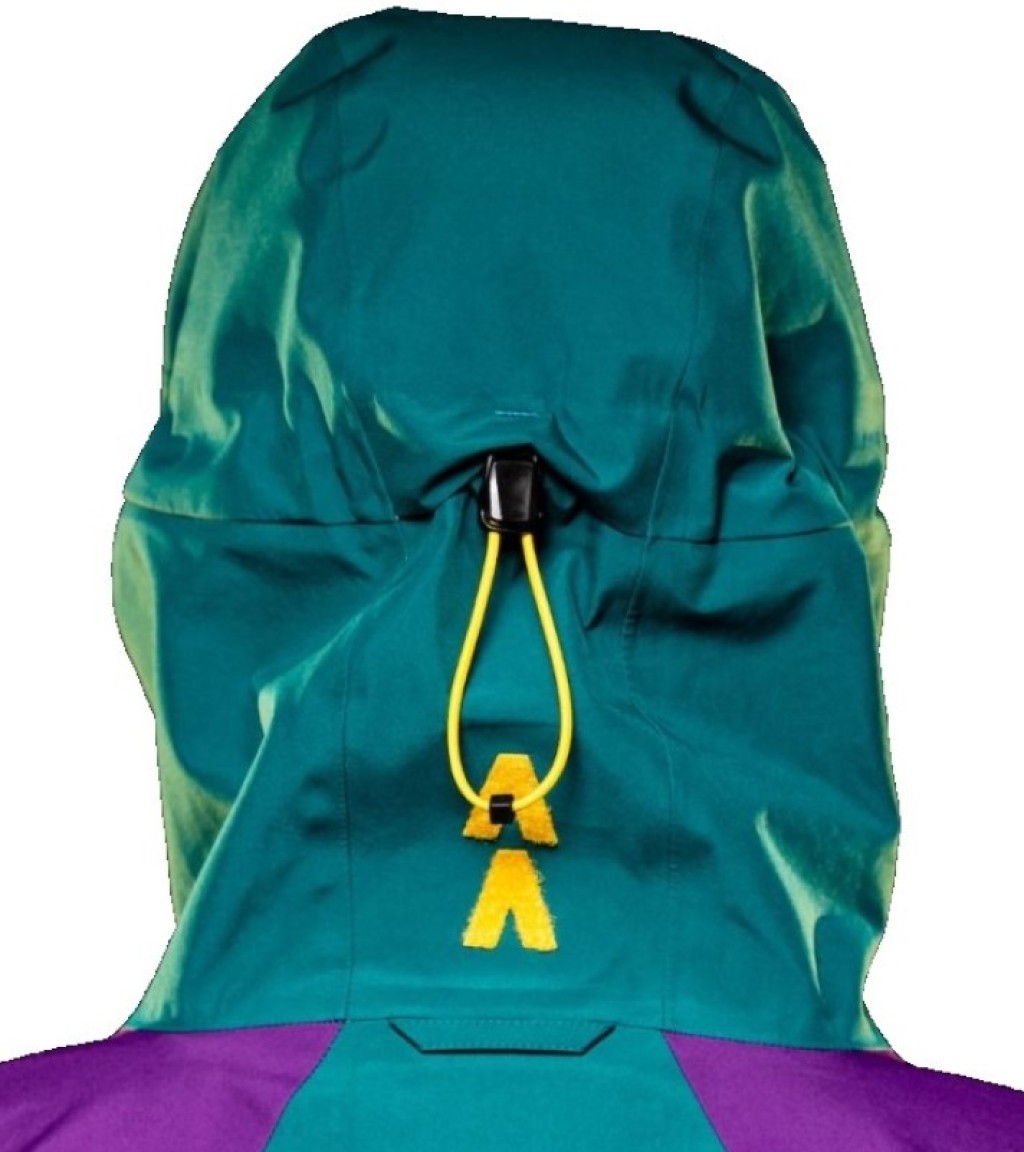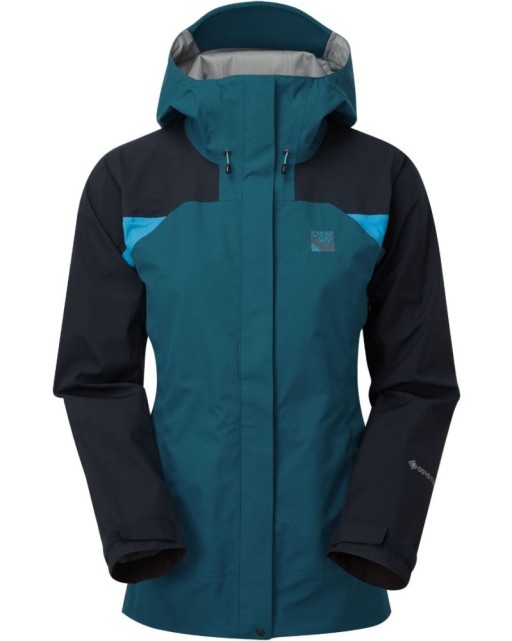A good hiking jacket is essential for your enjoyment of the great outdoors. There is no such thing as bad weather, only inappropriate clothing. With 18 years of experience in the hiking, walking and backpacking business, Agoora Outdoor are well equipped to give excellent advice on a Waterproof Jacket for Hiking. Our Walking jacket guide will explain what to look for when choosing your ideal coat.
weather, only inappropriate clothing. With 18 years of experience in the hiking, walking and backpacking business, Agoora Outdoor are well equipped to give excellent advice on a Waterproof Jacket for Hiking. Our Walking jacket guide will explain what to look for when choosing your ideal coat.
The best hiking jacket will be waterproof with taped seams and a DWR Durable Water Repellent surface finish. It will be highly breathable, lightweight, durable, fitted with a wire peaked, adjustable hood and with features which keep out the weather like storm flaps, hem draw cord, hood face aperture draw cords and fastenings around the cuffs.
When choosing a waterproof jacket for hiking, first of all you need to decide which type you want. Should it be lightweight and packable or should it be strong and durable with a full specification? As a general rule, the greater the number of features and the better the performance in terms of hydrostatic head, breathability and durability, then the heavier the jacket. For example, the lightest Gore-Tex jacket is typically less breathable with a lower hydrostatic head than a heavier Gore-Tex Pro jacket.
What is the “Hydrostatic Head”? If you take a drainpipe and fix a waterproof fabric securely across the bottom, then fill up the drainpipe with water. The hydrostatic head (HH) is how high the water is before the fabric starts to leak. The typical tent fabric has a hydrostatic head of 3,000 mm or 3 metres high, but for waterproof jackets, the level of wear and punishment is much higher so the figure varies between 5,000 mm (5 m) and 30,000 mm (30 m) for the best Gore-Tex. To be considered waterproof a fabric must have a minimum HH of 1.5 m, however, if you sit on such a fabric the pressure from your body weight will cause it to leak. The minimum HH needed to resist your body weight is 3 m. The higher the HH the longer the fabric of your waterproof jacket for hiking will last before the waterproofing fails over time.
 What is the “Breathability”? This term refers to the ability of the fabric to pass water vapour from your perspiring body on the inside to the outside of the hiking jacket. This depends on the weather conditions. It will be less on a wet day when humidity is high and more on a dry day when humidity is low. This can be measured in different ways with differing standards. A common term is the MVTR or Moisture Vapour Transfer Rate which is measured in gm per square metre over 24hrs. Owing to the different methods of measurement there can be some confusion when comparing fabrics as different manufacturers use different units of measurement. The higher the breathability, the less “clamminess” you will experience when wearing your waterproof jacket for hiking.
What is the “Breathability”? This term refers to the ability of the fabric to pass water vapour from your perspiring body on the inside to the outside of the hiking jacket. This depends on the weather conditions. It will be less on a wet day when humidity is high and more on a dry day when humidity is low. This can be measured in different ways with differing standards. A common term is the MVTR or Moisture Vapour Transfer Rate which is measured in gm per square metre over 24hrs. Owing to the different methods of measurement there can be some confusion when comparing fabrics as different manufacturers use different units of measurement. The higher the breathability, the less “clamminess” you will experience when wearing your waterproof jacket for hiking.
What about “Taped Seams”? Some fashion retailers will charge a high price for a jacket they claim is “dry” but upon inspection, the seams are not taped so rainwater will leak in along the seams. If you are out hiking and the heavens open with a torrential downpour, this can be a serious problem and you can get soaked. So, if you want a genuine product with a proper waterproof performance, its best to play safe and buy your waterproof hiking jacket from a proper outdoor retailer and not a fashion retailer. You can’t always see the seam tape as this is hidden by the lining of the hiking jacket, but if you closely look at the seam from the outside you can usually see the outline of the seam tape.
What is the purpose of a DWR? A Durable Water Repellent surface finish is included in any good waterproof hiking jacket to prevent the surface fabric from wetting out when it rains. It is very difficult for a wet fabric to “breath”. For the jacket to be comfortable it needs to allow as much water vapour from perspiration to escape to the outside as possible. A wet fabric is a barrier to this happening. A quality hiking jacket will have a DWR, this will wear off over time and will need to be renewed every six months or so depending on how often the jacket is used. This can be achieved using products supplied by NikWax or Grangers.
What to look for in a hiking jacket hood? The best hoods are “grown on” to keep out the weather (i.e. they are not detachable so wind and rain are kept out and the hood can’t be lost). Next, the hood is fully adjustable with an elasticated draw cord which goes around the head with a toggle at the back. This enables the hood to be clamped to your head so the hood turns with you when you look from side to side giving all round visibility. Some cheaper hoods will have volume adjustment but not the ability to clamp the hood to your head, hence the hood stays in place when you turn your head to look to the side so you can’t see anything, just the side of the hood.
A wired peak is a great idea to keep out driving rain or hail stones. With regard to the drawcords around  the face aperture, it is important that the cord ends are held in place so the toggles aren’t whipped into your face by the wind.
the face aperture, it is important that the cord ends are held in place so the toggles aren’t whipped into your face by the wind.
Ideally it should be possible to roll away the hood and fasten in place when not in use although some people prefer not to use this feature as they think it makes the jacket uncomfortable. Personally I like it but each to their own, it’s a free country.
Some hoods are designed to fit over a climbing helmet. The drawback with this is that the hood does look a little odd with all that extra fabric. Also, the wind can get inside the hood and blow it out and off. This can happen easily when wearing it over a helmet, I prefer to have a standard hood and to fit the helmet over the hood. I find it is possible to fit the chin strap over the hood. This ensures the hood stays in place when walking into a strong wind.
Which is the Best Waterproof Fabric? Well this is pretty complicated so we’ve got a whole new blog about this, so take a look here: Help Me Choose Waterproof Fabrics
Other Waterproof Hiking Jacket Features to look for are:
- A two-way front zip so you can pull the zip up from the bottom if you need to stop for a toilet break or to put on waterproof over-trousers.
- Double overlapping storm flaps with fastenings to protect the front zip from extreme wet weather. Some lightweight jackets will have a single storm flap behind the zip, this is lighter but less effective than double flaps. An alternative is to have a water resistant zip with internal storm flap but the water resistance on the zip will deteriorate over time. I think the best, longer lasting solution if you are not worried about the extra weight is to have the double storm flaps.
- A slight drop tail for butt protection at the back and unrestricted leg movement at the front.
![Zipped Side Pocket and the]()
- Two large, zipped side pockets with storm flaps to keep out the rain. Some pockets are made with mesh so the pockets can be opened to provide extra ventilation in warm weather. If this is the case check to make sure the bottom of the pocket is made from a tough lining material to prevent holes forming. This is important as holes quickly form in mesh. Also, the pockets should ideally be positioned high enough so that rucksack straps do not block access to the pockets. Zips are essentiall so items aren't lost during activities.
- An internal chest security pocket with zipped fastening and stretch fabric lining, safe from rainwater and an excellent location for your mobile phone.
- A Napoleon style map pocket, large enough for an OS map can be useful.
- Some of the top jackets have under arm pit zips for extra ventilation to aid the removal of perspiration. These zips tend to have plasticised waterproof finishes. However, it is extremely difficult to seal the ends so these zips may leak in heavy rain. Also, if you are wearing a t-shirt underneath, your naked arms may rub on the zips, causing some discomfort.
- A good jacket will have adjustable cuff apertures with “Velcro” adjustment tabs to keep out the drafts. These tabs should be easy to use when wearing gloves or mitts.
- The ideal hiking jacket will have a bottom hem with an elasticated draw cord front and back and a toggle on each side at which the elastic can be tightened with one hand to keep out the drafts.
- A second concealed drawcord around the waste helps to stops drafts going up your back.
- A chin guard with beardguard trim (like a very fine micro-fleece) on the internal storm flap for the main fron zip gives excellent comfort on your face. This stops your beard or skin from being caught in the zip.
- A hang loop at the back.
Clearly a balance has to be struck between jacket features, durability, performance, lightweight, packability and price. Only you can decide what’s best for your circumstances, by the way, many jacket manufacturers claim their hiking jackets are lightweight including the high specification heavier jackets. Don’t take their word for it. Always check the actual weight and compare with other brands you will be surprised.
If you have any questions, please contact us here at Agoora Outdoor, we will be happy to help. You can use the buttons at the top and bottom of this page.
Finally, why not try to find your waterproof jacket for hiking by clicking on the appropriate link below:
Womens Waterproof Walking Jackets
Mens Waterproof Jackets








 Change currency
Change currency
 GBP
GBP  AUD
AUD  CAD
CAD  CHF
CHF  DKK
DKK  EUR
EUR  JPY
JPY  NOK
NOK  NZD
NZD  RUB
RUB  USD
USD 




 weather, only inappropriate clothing. With 18 years of experience in the hiking, walking and backpacking business, Agoora Outdoor are well equipped to give excellent advice on a Waterproof Jacket for Hiking. Our Walking jacket guide will explain what to look for when choosing your ideal coat.
weather, only inappropriate clothing. With 18 years of experience in the hiking, walking and backpacking business, Agoora Outdoor are well equipped to give excellent advice on a Waterproof Jacket for Hiking. Our Walking jacket guide will explain what to look for when choosing your ideal coat. What is the “Breathability”? This term refers to the ability of the fabric to pass water vapour from your perspiring body on the inside to the outside of the hiking jacket. This depends on the weather conditions. It will be less on a wet day when humidity is high and more on a dry day when humidity is low. This can be measured in different ways with differing standards. A common term is the MVTR or Moisture Vapour Transfer Rate which is measured in gm per square metre over 24hrs. Owing to the different methods of measurement there can be some confusion when comparing fabrics as different manufacturers use different units of measurement. The higher the breathability, the less “clamminess” you will experience when wearing your waterproof jacket for hiking.
What is the “Breathability”? This term refers to the ability of the fabric to pass water vapour from your perspiring body on the inside to the outside of the hiking jacket. This depends on the weather conditions. It will be less on a wet day when humidity is high and more on a dry day when humidity is low. This can be measured in different ways with differing standards. A common term is the MVTR or Moisture Vapour Transfer Rate which is measured in gm per square metre over 24hrs. Owing to the different methods of measurement there can be some confusion when comparing fabrics as different manufacturers use different units of measurement. The higher the breathability, the less “clamminess” you will experience when wearing your waterproof jacket for hiking. the face aperture, it is important that the cord ends are held in place so the toggles aren’t whipped into your face by the wind.
the face aperture, it is important that the cord ends are held in place so the toggles aren’t whipped into your face by the wind.